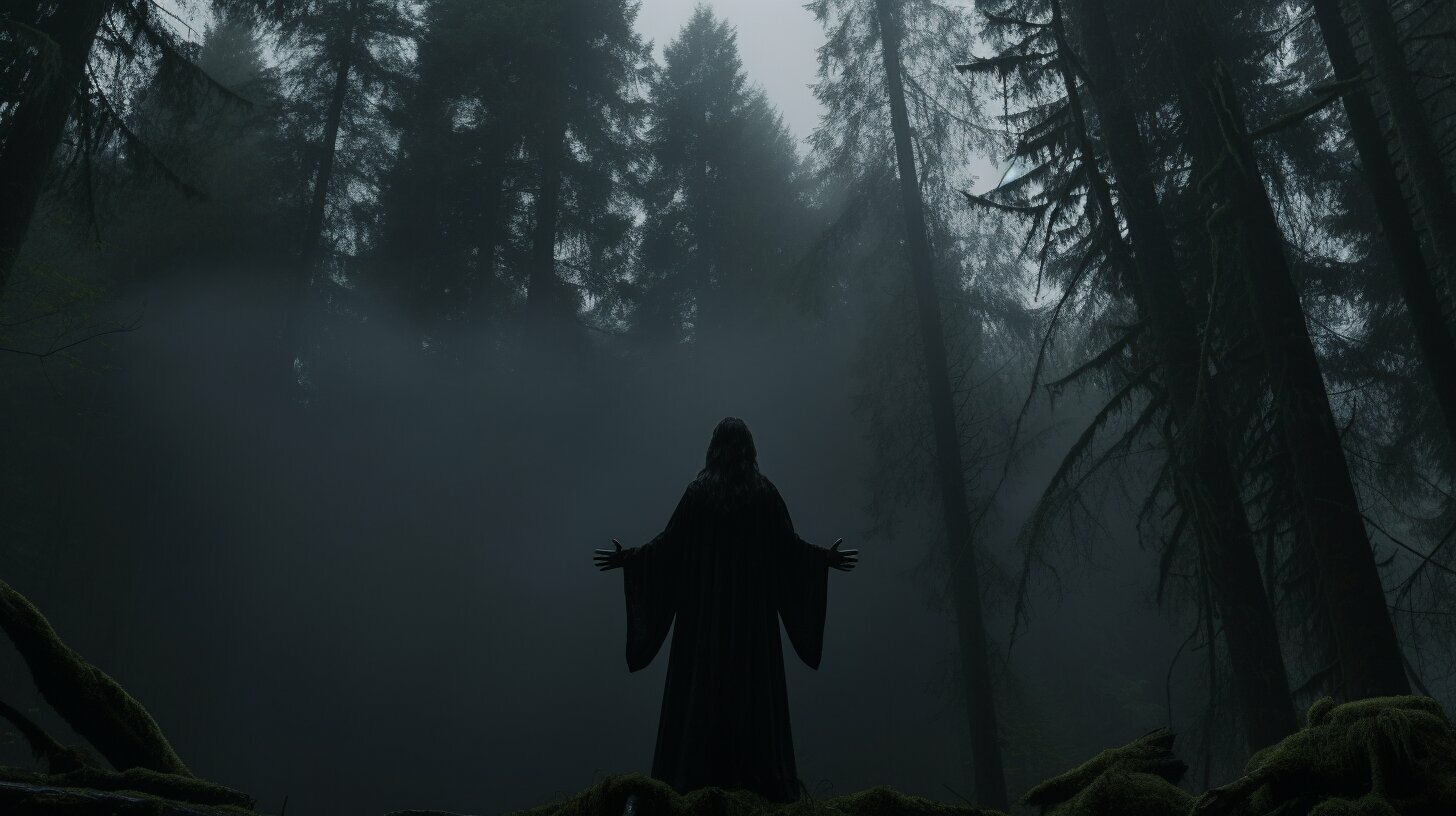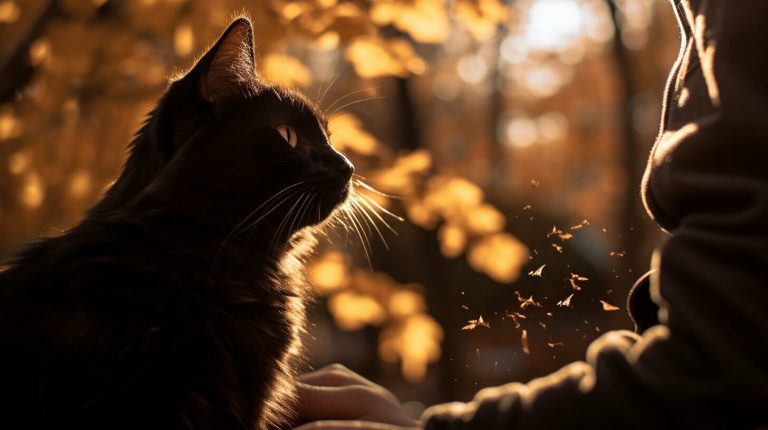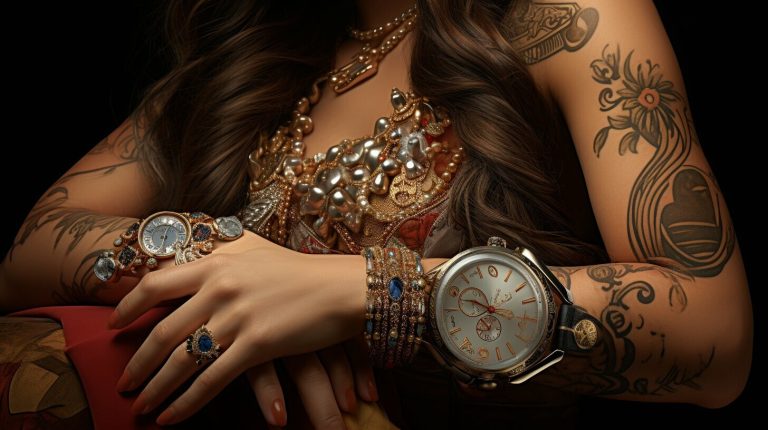Unraveling the Mystery: Why Do Witches Wear Black?
Witches have long been associated with donning black clothing, but have you ever wondered why? The answer lies in a combination of historical events, cultural beliefs, and the desire to portray witches as mysterious and different from societal norms.
The association between witches and wearing black can be traced back to the infamous witch hunts in Salem, Massachusetts in 1692. Tituba, an Indian slave at the center of the Salem mystery, played a crucial role in shaping the perception of witches and their attire. During her testimony, Tituba described encounters with supernatural beings and animals, including a man in a dark coat and various animals. Her vivid accounts helped propagate the idea that witches wore black and engaged in dark magic.
In popular culture, the black cat has also become closely associated with witches. In ancient Egypt, black cats were revered as symbols of protection and good luck. However, during the Middle Ages, black cats became associated with witchcraft and were believed to be witches’ familiars. This led to the persecution and execution of many innocent cats during the witch hunts.
The choice of black clothing for witches can be seen as a stylistic choice reflecting their outcast status and eccentricity. Witches are often depicted as wearing black, purple, or green attire, colors traditionally associated with witchcraft. Additionally, witches may adorn their clothing with symbols or images of mystical significance.
Overall, the mystery of why witches wear black can be attributed to historical events, cultural beliefs, and the desire to portray witches as mysterious and different from societal norms.
Key Takeaways:
- The association between witches and black clothing can be traced back to the Salem witch hunts in 1692
- Tituba, an Indian slave, played a role in shaping the perception of witches wearing black
- Black cats became associated with witchcraft during the Middle Ages
- Witches may choose black attire to reflect their outcast status and eccentricity
- Black clothing is often adorned with symbols or images with mystical significance
The Historical Origins of Black Attire for Witches
To understand why witches wear black, we must delve into the historical origins and cultural significance behind this choice of attire. The association between witches and wearing black can be traced back to the infamous witch hunts in Salem, Massachusetts in 1692. Tituba, an Indian slave at the center of the Salem mystery, played a crucial role in shaping the perception of witches and their attire. During her testimony, Tituba described encounters with supernatural beings and animals, including a man in a dark coat and various animals. Her vivid accounts helped propagate the idea that witches wore black and engaged in dark magic.
In popular culture, the black cat has also become closely associated with witches. In ancient Egypt, black cats were revered as symbols of protection and good luck. However, during the Middle Ages, black cats became associated with witchcraft and were believed to be witches’ familiars. This led to the persecution and execution of many innocent cats during the witch hunts.
The choice of black clothing for witches can be seen as a stylistic choice reflecting their outcast status and eccentricity. Witches are often depicted as wearing black, purple, or green attire, colors traditionally associated with witchcraft. Additionally, witches may adorn their clothing with symbols or images of mystical significance.
| Symbolism of Black Attire for Witches | Historical Connection |
|---|---|
| Portrayal of mystique and otherworldly nature | Association between witches and black cats |
| Stylistic choice reflecting outcast status and eccentricity | Persecution and execution of black cats during the witch hunts |
| Colors traditionally associated with witchcraft |
The Symbolism of Black Attire for Witches
Overall, the mystery of why witches wear black can be attributed to historical events, cultural beliefs, and the desire to portray witches as mysterious and different from societal norms. The connection between witches and black clothing has deep roots in history, with influences from Salem witch trials and the association between witches and black cats. This has contributed to the symbolism and significance of black attire in witchcraft. From their stylistic choices to the use of mystical symbols, witches continue to captivate our imagination and intrigue us with their enigmatic appearance.
Tituba and the Salem Witch Trials: A Key Influence
The association between witches and black clothing can be traced back to the infamous Salem Witch Trials, where a certain figure played a significant role in the portrayal of witches. Tituba, an Indian slave owned by Reverend Samuel Parris, was one of the first accused of practicing witchcraft in Salem Village in 1692.
In her testimony, Tituba described encounters with supernatural beings and animals, including a man in a dark coat and various animals. Her vivid accounts, combined with the prevailing beliefs and fears of the time, helped to solidify the association between witches and black attire. People began to believe that witches wore black clothing to blend in with the darkness, allowing them to carry out their dark magic unnoticed.
Furthermore, the Salem Witch Trials created a lasting impression on popular culture and influenced the portrayal of witches in literature, art, and media. The image of witches wearing black became ingrained in the collective imagination, reinforcing the idea that black clothing was synonymous with witchcraft and evil.
The Historical Origins of Black Attire for Witches
While the exact origins of witches wearing black are difficult to pinpoint, the historical context of the Salem Witch Trials provides valuable insight into the development of this association. During this period, Puritan beliefs and superstitions played a significant role in shaping the perception of witches and their attire.
Puritans saw the world in stark moral terms, with black symbolizing darkness, sin, and evil. Witches were believed to have made pacts with the devil and practiced magic to harm others. Wearing black became synonymous with their alleged connection to the forces of darkness, further fueling the fears and suspicions surrounding witches.
The Symbolism of Black Attire for Witches
Aside from historical and cultural reasons, the symbolism of black attire for witches also plays a crucial role in their portrayal. Black is often associated with mystery, power, and the unknown, all qualities attributed to witches throughout history.
The color black represents the unseen, the hidden, and the depths of the supernatural world. By wearing black, witches convey an air of mystique and otherworldliness, aligning themselves with the esoteric and the occult. It serves as a visual cue for their unconventional nature and defiance of societal norms, setting them apart from the mundane and ordinary.
| Key Points: | H2: |
|---|---|
| The association between witches and black clothing | Tituba and the Salem Witch Trials: A Key Influence |
| Historical origins of black attire for witches | The Historical Origins of Black Attire for Witches |
| Symbolism of black attire for witches | The Symbolism of Black Attire for Witches |
In conclusion, the historical context of the Salem Witch Trials, the influence of figures like Tituba, and the symbolism associated with black clothing have all contributed to the enduring association between witches and their choice of attire. The mystery of why witches wear black continues to captivate our imagination and remind us of the complex and multifaceted nature of witchcraft.
The Symbolism of Black Attire for Witches
Black attire for witches holds deep symbolism, reflecting their unique connection to the mystical and their divergence from societal norms. The color black has long been associated with mystery, darkness, and the unknown, making it a natural choice for those who practice witchcraft. Whether it’s a flowing black cloak, a pointed black hat, or a simple black dress, the choice of black clothing serves to visually convey the enigmatic nature of witches.
Witches are often depicted as powerful individuals who possess knowledge and abilities that set them apart from others. By wearing black, witches embrace their otherworldly identity and signal their allegiance to the realm of magic. The color black represents the hidden depths of the subconscious, the unseen forces that govern the universe, and the secrets that lie within the hearts of witches.
In addition to its association with the mystical, black attire for witches also symbolizes their rebellion against societal norms. Throughout history, witches have been vilified and persecuted for their unconventional beliefs and practices. By boldly donning black, witches boldly declare their defiance of societal expectations and their refusal to conform to the limitations imposed upon them.
The Role of Symbols and Adornments
While the color black itself holds significant symbolism, witches often enhance their attire with additional symbols and mystical imagery. These adornments can take the form of intricate patterns, occult symbols, or representations of mythical creatures. These symbols serve as potent reminders of the magical powers bestowed upon witches and the ancient traditions they uphold.
It is worth noting that not all witches exclusively wear black. Some may incorporate other colors, such as purple or green, into their outfits to express their individuality or align with specific magical practices. However, black remains the most iconic and widely recognized color associated with witches, serving as a powerful visual indicator of their connection to the mystical and their embrace of their true identities.
Black Cats and Witches: A Historical Connection
The connection between witches and black cats further solidified the notion of witches wearing black attire, adding to their enigmatic image. In ancient Egypt, black cats were considered sacred and were believed to bring good fortune and protection. However, during the Middle Ages, black cats became associated with witchcraft and were believed to be witches’ familiars, or supernatural companions.
The association between witches and black cats can be traced back to the widespread belief in witchcraft during this period. Superstitions and fears surrounding witchcraft led to the persecution and execution of many innocent people, and black cats became symbols of this perceived evil. It was believed that witches could transform into black cats, enabling them to move about unnoticed and carry out their dark deeds.
This association between witches and black cats played a significant role in shaping the perception of witches and their attire. The color black became synonymous with witchcraft and the occult, reinforcing the idea that witches wore black clothing to camouflage themselves and blend into the night.
Table: Famous Historical Witches and Their Associations with Black Cats
| Witch | Country | Black Cat Connection |
|---|---|---|
| Margaret Jones | Colonial America | Accused of turning into a black cat during her alleged witchcraft activities. |
| Urbain Grandier | France | Black cat seen with him during his trial, strengthening the belief in his involvement with witchcraft. |
| Elizabeth Sawyer | England | She was accused of having a black cat as her familiar and using it to perform witchcraft. |
Today, the association between witches and black cats continues to be prevalent in popular culture and folklore. Halloween decorations often feature black cats, and they are commonly depicted alongside witches in literature, films, and artwork. While the connection between witches and black cats is rooted in historical superstition, it has become an enduring symbol of the mystique and allure attributed to witches and their choice of black attire.
Stylistic Choices and Eccentricity of Witches
Witches’ choice of black clothing can be seen as a reflection of their eccentricity, setting them apart from societal norms. The traditional outfit of witches often consists of long, flowing black robes or dresses, adding to their mysterious and enigmatic aura. The color black, associated with darkness and the unknown, aligns perfectly with the image of witches and their connection to magic and the supernatural.
It is not just black that witches opt for; they also embrace other unconventional colors like purple and green. These colors have long been associated with witchcraft and symbolize the mystical nature of witches. Purple is often linked to spirituality and psychic abilities, while green represents the connection to nature and herbalism – both integral parts of witchcraft.
In addition to their choice of color, witches also adorn their clothing with symbols and imagery of mystical significance. These symbols may include pentagrams, crescent moons, or various other occult symbols. By incorporating these elements into their attire, witches further emphasize their connection to the esoteric and the unseen.
The Power of Witch Attire
“The clothes we wear are an expression of our identities and beliefs. For witches, their attire is not just a fashion statement but a way to outwardly manifest their inner power and connection to the supernatural world.” – Cynthia Blackwood, expert on witchcraft and symbolism
Overall, the stylistic choices made by witches in terms of their clothing are a deliberate expression of their individuality and their rejection of societal norms. By embracing black, purple, and green attire adorned with mystical symbols, witches carve out their unique identity as powerful and mysterious beings, fully embracing their role as practitioners of the arcane arts.
| Color | Symbolism |
|---|---|
| Black | Darkness, mystery, magic, the unknown |
| Purple | Spirituality, psychic abilities |
| Green | Nature, herbalism, connection to the Earth |
Adornments and Symbolism in Witch Attire
Witches not only wear black clothing, but they also adorn themselves with symbols and images of mystical significance. These adornments serve to enhance their magical aura and convey their connection to the unseen realms. From intricate jewelry to embroidered patches, every accessory holds a deeper meaning in the witch’s attire.
One common symbol found in witch attire is the pentacle, a five-pointed star enclosed in a circle. Representing the five elements – earth, air, fire, water, and spirit – the pentacle signifies the witch’s command over these forces. It is often seen on pendants, rings, or embroidered onto the brim of a witch’s hat, serving as both a protective talisman and a symbol of their spiritual journey.
Another symbol often incorporated into witch attire is the triple moon symbol. Consisting of a waxing crescent, a full moon, and a waning crescent, this symbol represents the phases of the moon and the cycle of life, death, and rebirth. Witches wear this symbol to honor the feminine divine and to attune themselves to the ebb and flow of natural energies.
Witch attire may also feature runes, ancient symbols of power and wisdom. Witches often carve these symbols onto amulets or engrave them onto their athames, ritual daggers used in magical ceremonies. Each rune carries its own energy and meaning, allowing witches to tap into specific vibrations and intentions in their spellwork.
| Symbol | Meaning |
|---|---|
| Pentacle | Represents the five elements and spiritual connection |
| Triple Moon | Symbolizes the phases of the moon and the cycle of life |
| Runes | Ancient symbols of power and wisdom |
While the choice to wear black may initially draw attention to witches, it is the addition of these symbolic adornments that truly sets them apart. Each piece serves as a statement of their mystical practice and acts as a beacon to others who share their beliefs. Through their attire, witches communicate their connection to the spiritual world and their dedication to the craft, perpetuating the enigmatic allure that surrounds them.
Conclusion
The question of why witches wear black has been unraveled, revealing a combination of historical events, cultural beliefs, and the desire to portray witches as mysterious and different.
The association between witches and their black attire can be traced back to the infamous witch hunts in Salem, Massachusetts in 1692. During the trials, Tituba, an Indian slave, testified about encounters with supernatural beings and animals, describing a man in a dark coat. This testimony helped perpetuate the belief that witches wore black and practiced dark magic.
In addition to the Salem Witch Trials, the historical association between witches and black cats also influenced the depiction of witches in black clothing. While black cats were once revered as symbols of protection and good luck in ancient Egypt, they became associated with witchcraft during the Middle Ages. This led to the persecution of both witches and innocent cats alike.
Furthermore, the choice of black clothing for witches can be seen as a stylistic choice reflecting their outcast status and eccentricity. Witches are often portrayed wearing black, purple, or green attire, colors traditionally associated with witchcraft. They may also adorn their clothing with symbols or images of mystical significance, adding to their enigmatic allure.
Overall, the mystery of why witches wear black is a result of historical events, cultural beliefs, and the desire to portray witches as mysterious and different from societal norms. The enduring symbolism of black clothing for witches continues to capture our imagination and intrigue us to this day.
FAQ
Why do witches wear black?
The association between witches and black attire can be traced back to the Salem witch trials in 1692. It is believed that the testimony of Tituba, an Indian slave involved in the trials, helped perpetuate the idea of witches wearing black and engaging in dark magic.
What is the historical significance of witches wearing black?
The historical origins of witches wearing black can be attributed to cultural beliefs and the desire to portray witches as mysterious and different from societal norms. Additionally, black clothing became associated with witchcraft during the Middle Ages.
How did Tituba and the Salem witch trials influence witches wearing black?
Tituba, through her vivid accounts during the Salem witch trials, described encounters with supernatural beings wearing dark attire. This contributed to the belief that witches wore black and engaged in dark magic.
What is the symbolism behind witches wearing black?
The choice of black clothing for witches can symbolize their outcast status and eccentricity. Black, purple, and green attire are traditionally associated with witchcraft, reflecting the mystical and otherworldly nature of witches.
What is the connection between black cats and witches?
In ancient Egypt, black cats were revered as symbols of protection and good luck. However, during the Middle Ages, black cats became associated with witchcraft and were believed to be witches’ familiars, leading to their persecution during witch hunts.
Why do witches make stylistic choices to wear black, purple, or green clothing?
Witches often choose to wear black, purple, or green clothing as a stylistic choice reflecting their unconventional nature. These colors have long been associated with witchcraft and help portray witches as mysterious and different from societal norms.
Do witches incorporate symbols or mystical imagery in their black clothing?
Yes, witches may adorn their clothing with symbols or images of mystical significance. These additional adornments further emphasize the spiritual and magical practices associated with witchcraft.
- Discovering Why Do Women Wear Lipstick: A Deeper Look - 19/12/2023
- Why Do Golfers Only Wear One Glove? - 16/12/2023
- Why Don’t Hobbits Wear Shoes? - 14/12/2023
Hi, I’m Rhiannon, the lead author behind The News Wire. As a passionate journalist, I strive to bring you the latest news and updates from all over the world. With a keen eye for detail and a dedication to unbiased reporting, I aim to deliver well-researched and informative articles that keep you informed and engaged. From breaking news to in-depth analyses, I cover a wide range of topics with the aim of keeping you in the loop. Join me on The News Wire as we explore the dynamic and ever-changing landscapes of global events, uncovering the stories that matter most.






